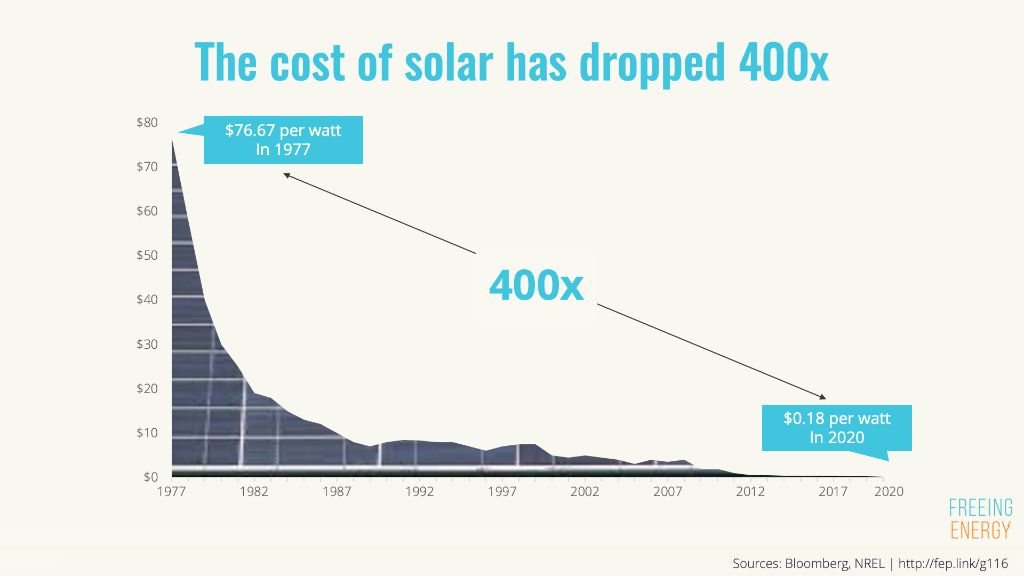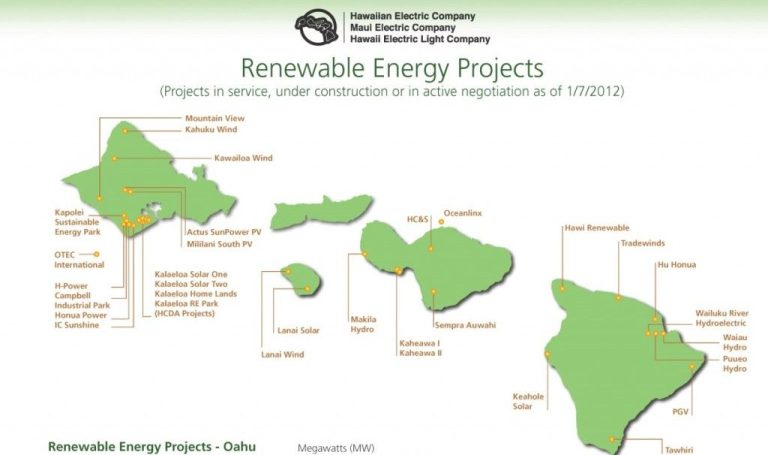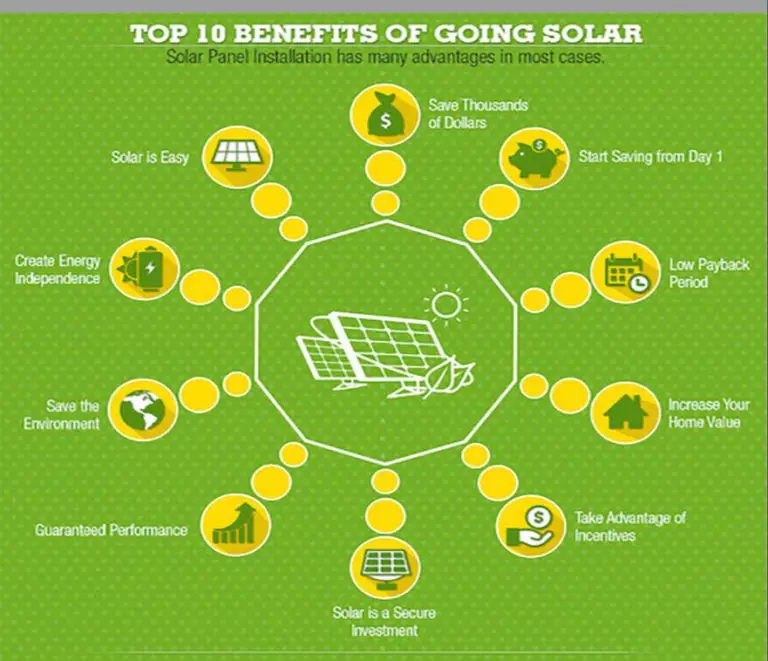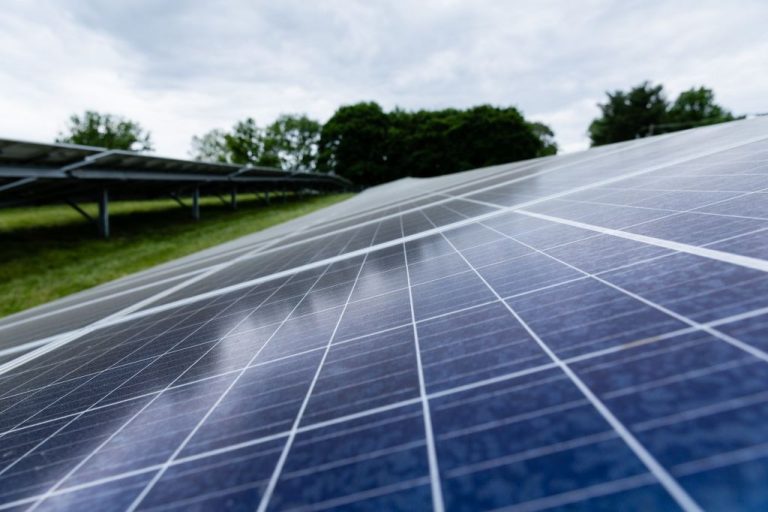Why Is Solar Energy The Cheapest?

Solar energy is energy derived from the sun and converted into electricity or heat using solar panels or solar thermal collectors. In recent years, the costs of solar panels and installation have declined dramatically, leading many experts to declare solar power as the cheapest source of electricity in history. But what exactly has driven down the costs of solar power so substantially? This article explores the key factors that explain why solar energy has become the most affordable energy option.
The main question we will examine is: What technological, economic, and policy factors have caused solar photovoltaics to experience massive price declines, making it the lowest-cost source of electricity in many parts of the world?
Falling Costs of Solar Panels
The costs of solar panels have dropped dramatically in the last 10 years. According to a 2021 report by the National Renewable Energy Laboratory, the installed price of utility-scale solar PV systems fell by 70% between 2010 and 2019 [1]. Residential solar PV system costs fell by over 50% during the same period [2]. In real terms, the costs fell by around 15% per year from 2010 to 2020, exceeding expert predictions [3]. This dramatic decrease in costs has been a major driver of solar energy’s increasing competitiveness.
Improving Efficiency
Solar cell efficiency has dramatically increased over the past few decades thanks to advances in materials and manufacturing techniques. Typical silicon solar cells had efficiencies around 12-14% in the 1980s, while today’s best commercial silicon cells now achieve 22-23% conversion of sunlight into electricity (1). Researchers have developed new solar cell designs using materials like perovskites that have reached over 25% efficiency in lab settings, getting closer to the 29% theoretical limit for silicon (2). These efficiency improvements have allowed solar panels to produce more electricity from the same surface area, lowering overall costs. As solar cell technology continues advancing, experts expect we’ll see panels commonly reaching 24-25% efficiency in the next 5-10 years.
1. https://www.energy.gov/eere/solar/solar-performance-and-efficiency
Economies of Scale
As solar production has dramatically increased worldwide, the costs of solar panels and associated components have plummeted. This is largely due to economies of scale, which refers to the cost advantages of mass production. When output increases, the average costs of producing each unit falls as fixed costs are spread out across more units. Solar manufacturers have been able to take advantage of economies of scale as demand has grown globally.
For example, between 2009 to 2019, the average price of solar panels dropped 89% as global production skyrocketed. Manufacturers refined processes, purchased materials in bulk at lower costs, automated parts of production, and built larger factories driving down the expense per panel. Larger companies have also been able to negotiate lower prices for raw materials as they buy in huge volumes. The massive worldwide increase in solar panel production and installation has allowed manufacturers to dramatically cut costs through economies of scale.
Supportive Government Policies
Government subsidies and policies have played a major role in driving the growth of solar energy and bringing down costs over the past decade. The federal government offers a 26% tax credit for installing residential solar panels through 2034 (https://www.energy.gov/eere/solar/homeowners-guide-federal-tax-credit-solar-photovoltaics). Many states also offer additional tax credits and rebates to make solar more affordable. According to Forbes, over half of U.S. states offer some form of solar incentive (https://www.forbes.com/home-improvement/solar/solar-tax-credit-by-state/). These financial incentives help offset the upfront cost of a solar system for homeowners and businesses.
In addition, renewable portfolio standards in over 25 states require electric utilities to source a portion of their electricity from renewable sources. These standards create guaranteed demand for solar power and other renewables. The steadily increasing requirements drive installations of large-scale solar farms to meet renewable energy targets. Government policies like net metering also make it easier for solar customers to sell excess electricity back to the grid.
By stimulating demand and defraying costs through financial incentives, government subsidies and policies have enabled the solar industry to achieve economies of scale. This has helped dramatically reduce solar panel costs by over 90% since 2009, making solar energy cost-competitive with conventional power sources.
Low Operation and Maintenance
One of the key advantages of solar power is its very low operation and maintenance (O&M) costs compared to fossil fuel power plants. According to the National Renewable Energy Laboratory (NREL), the fixed O&M costs for utility-scale solar PV plants in 2020 were around $15 per kilowatt (kW) per year, while variable O&M costs were around $3 per megawatt-hour (MWh) [1].
In comparison, coal plants have fixed O&M costs ranging from $30-75/kW, while natural gas combined cycle plants range from $10-15/kW [2]. Additionally, fossil fuel plants have significant fuel costs and variable O&M costs associated with continual burning of fuel. Solar panels require no fuel and have minimal moving parts, making operations and maintenance straightforward and low cost.
For a typical 50 megawatt solar farm, fixed O&M costs would be around $750,000 per year. For a 500 megawatt coal plant, fixed O&M could be $15-37.5 million per year. Over 20-30 years, those O&M savings add up and are a major factor in solar’s economic competitiveness.
No Fuel Costs
One of the key advantages of solar energy is that it does not require any ongoing fuel costs, unlike traditional energy sources like coal, natural gas, and oil. Once solar panels are installed, they can generate electricity from sunlight without the need for any fuel input1. This means solar energy has zero fuel costs over the lifespan of a solar system, which is typically 25-30 years2.
In contrast, fossil fuels like coal and natural gas require continual purchases of the fuel in order to operate. The costs of these fuels are subject to price volatility and have been rising over time. This exposes fossil fuel plants to ongoing fuel price risk and increasing generation costs over time. With no fuel costs, solar provides long-term price certainty and stability.
The lack of fuel costs gives solar energy a significant economic advantage over conventional energy sources. It means that once the upfront capital costs of solar panels are recovered, the cost of generating electricity from solar drops dramatically, as there are no variable fuel expenses. This cost predictability makes financing and budgeting for solar projects much simpler compared to fossil fuel plants.
Competitive without Subsidies
The cost of solar energy has fallen so dramatically in the last decade that it is now competitive with traditional energy sources, even without subsidies in many areas. According to a 2021 report from BloombergNEF, wind and solar power are now cheaper than coal and gas in two-thirds of the world. The levelized cost of energy (LCOE) for utility-scale solar photovoltaics dropped 89% between 2009 and 2020.
In the United States, the Department of Energy has set a goal through their SunShot 2030 initiative to reduce the cost of solar by an additional 50% by 2030. However, solar and wind are already competitive in many U.S. regions. Contracts for solar and wind in the Southwest Power Pool fell below $20/MWh in 2019 and 2020. For comparison, the LCOE of natural gas combined cycle plants ranges from $44-68/MWh.
The solar industry has reached a point where leading developers say they can install utility-scale solar at competitive prices without relying on federal tax credits. While subsidies helped accelerate growth in previous years, analysts say the industry can now expand based on market forces alone. However, policies that support fair market access and encourage renewable investments will be important for continued growth.
Growing Investment
As costs for solar technology have declined, investment in solar energy has surged globally. According to Investopedia, global investment in solar energy grew from $160 billion in 2014 to over $200 billion in 2015 [1]. SmartAsset reports that in 2021, there was a record $174 billion invested in renewable energy globally, with solar accounting for over half of that investment [2]. This growth is expected to continue, with projections that global installed solar capacity will more than triple between 2022 and 2030.
Much of the investment in solar is coming from major energy companies diversifying their portfolios as well as institutional investors looking for long-term stable returns. Government policies like renewable portfolio standards and tax credits have also stimulated investment by making solar projects more financially viable. Overall, as solar continues to reach grid parity with fossil fuels, it is attracting enormous sums of capital from investors who see its potential as an increasingly mainstream energy source.
Conclusion
Solar energy has become the cheapest energy source due to several key factors. The costs of solar panels have fallen dramatically in the past decade thanks to improvements in manufacturing and economies of scale. Solar panel efficiency has also steadily increased, allowing more electricity to be generated from the same sized systems. Supportive government policies like tax credits, renewable portfolio standards, and net metering have also helped drive adoption.
In addition, solar has inherent advantages over fossil fuel energy sources that make it cheap to operate and maintain. There are no ongoing fuel costs, and solar systems require little maintenance over their lifetime. This has allowed unsubsidized solar to become cost competitive with coal, natural gas, and nuclear energy in many parts of the world.
With solar already cheaper than new fossil fuel plants in most of the world, and costs projected to keep falling, the future is very bright. We can expect massive growth in solar installations in the coming decades as it becomes one of the main sources of new electricity generation capacity. The transition to solar is being driven by simple economics – it is now the cheapest form of energy in many places. This reinforces solar’s position as a critical technology for combating climate change while also powering the global economy cost-effectively.





